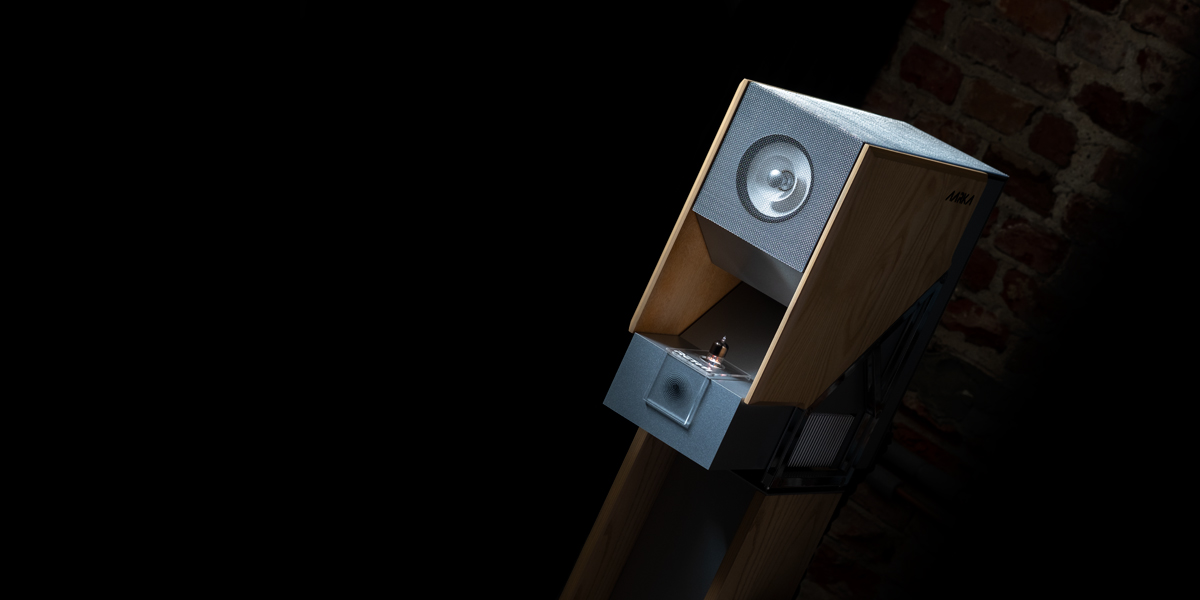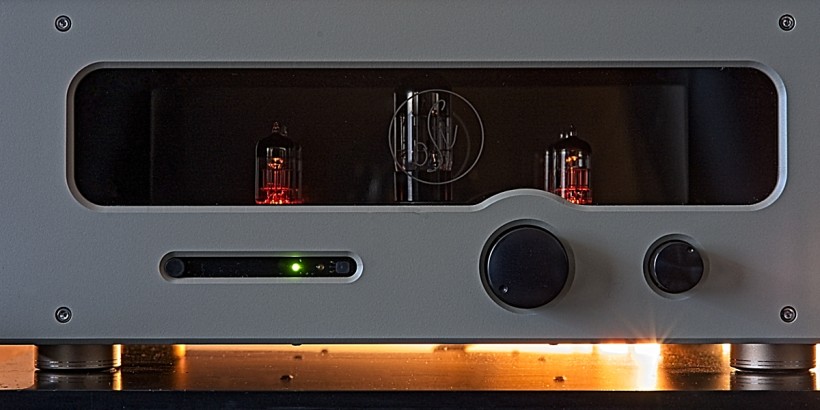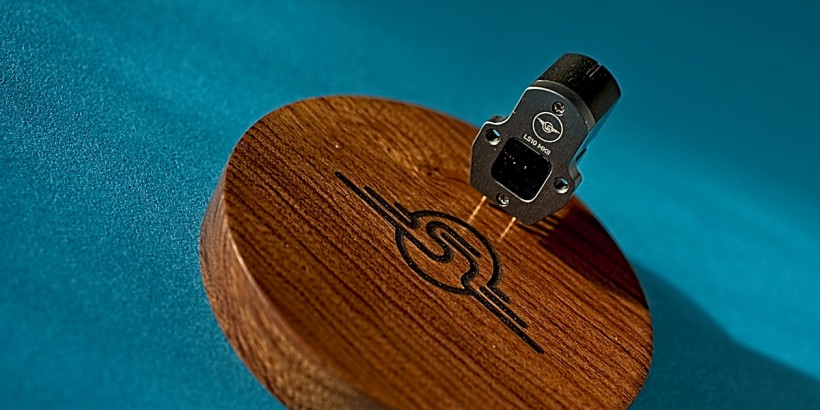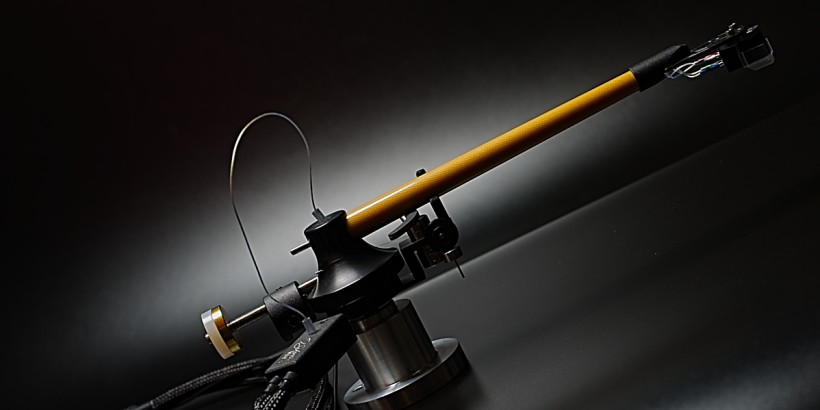Although Rethm Aarka speaker set had its debut two years ago, recent lockdowns had its maker Jacob George at the drawing board again. Time spent there effectively turned his entire roster upside down. Today’s Aarka makes that point rather well by being visually unlike any other Rethm we’ve seen thus far. Enjoy!
Widebander gymnastics
Although full-range speakers are far less popular than their regular siblings, they’re quite frequent guests at this site. Since its launch in early 2016 I’ve reviewed about a dozen of them. With the exception of one passive monitor set most were floorstanders and one internally infused with isobaric subs. Still, their active standmount representative was yet to come and we’re about to close that gap today. Prior to doing just that it’s worth knowing that most full-sized full-range products incorporate a single wideband driver rear-loaded by a folded horn inside a rather large cabinet. As such these topologically minimalist exotic designs are mainly targeted at connoisseurs of the breed who’re already aware what it does. For many years there was little variation there, but several springs back this status quo changed a fair bit. Now some manufacturers known for purist wideband designs also offer separate powered subs, but this report’s Indian company Rethm took the active detour prior to anyone else.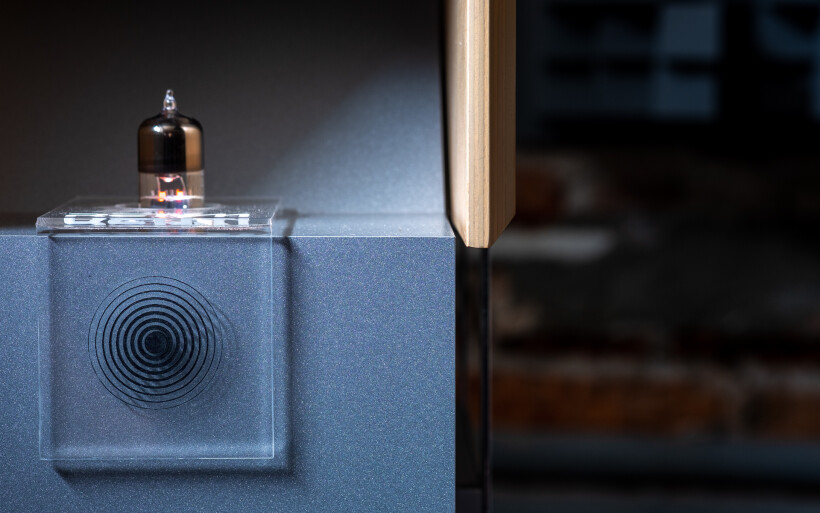 After years of being faithful to the orthodox full-range genre, Rethm’s founder Jacob George wanted to increase his passive speakers’ bass output and in-room flexibility. That called for a radically different approach and means in form of powered bass assistance for wideband drivers, but internally in the same box. His first commercially available such an effort baptized Saadhana had its official debut in January 2007 and caused quite the stir. Soon after Rethm’s entire roster underwent a major overhaul to only feature actively augmented full-range speaker sets and Jacob’s company has been known for them ever since. After sampling his Maarga I was impressed and with appetite for more. Whatever was in the cards, it had to feature active bass and Rethm’s in-house made full-rangers, but other than this I hadn’t a clue.
After years of being faithful to the orthodox full-range genre, Rethm’s founder Jacob George wanted to increase his passive speakers’ bass output and in-room flexibility. That called for a radically different approach and means in form of powered bass assistance for wideband drivers, but internally in the same box. His first commercially available such an effort baptized Saadhana had its official debut in January 2007 and caused quite the stir. Soon after Rethm’s entire roster underwent a major overhaul to only feature actively augmented full-range speaker sets and Jacob’s company has been known for them ever since. After sampling his Maarga I was impressed and with appetite for more. Whatever was in the cards, it had to feature active bass and Rethm’s in-house made full-rangers, but other than this I hadn’t a clue. The compact pallet sent my way from Jacob’s place just recently comprised of three separate boxes that housed something far smaller than Maarga, fully active and named to ring familiar bells. Aarka in Sanskrit translates into singing in praise and also is Rethm’s monitor set that Srajan had already reviewed two years ago here. Today’s product is its heavily reworked successor that was 18 months in the making. Jacob explained that the first Aarka had never really launched and Srajan’s sample was the only one that actually had left Rethm’s workshop. During the pandemic crisis and lockdowns its founder felt inspired to yet again return to the drawing board and redo the entire lineup. First a new labyrinth route for his floorstanding models was conceptualized and subsequently new visual form that had to follow the primary function. Then the same principles and aesthetics were applied to a more compact Aarka, in hope that it’d inherit sonic gains its reworked larger siblings already benefited from. It worked.
The compact pallet sent my way from Jacob’s place just recently comprised of three separate boxes that housed something far smaller than Maarga, fully active and named to ring familiar bells. Aarka in Sanskrit translates into singing in praise and also is Rethm’s monitor set that Srajan had already reviewed two years ago here. Today’s product is its heavily reworked successor that was 18 months in the making. Jacob explained that the first Aarka had never really launched and Srajan’s sample was the only one that actually had left Rethm’s workshop. During the pandemic crisis and lockdowns its founder felt inspired to yet again return to the drawing board and redo the entire lineup. First a new labyrinth route for his floorstanding models was conceptualized and subsequently new visual form that had to follow the primary function. Then the same principles and aesthetics were applied to a more compact Aarka, in hope that it’d inherit sonic gains its reworked larger siblings already benefited from. It worked.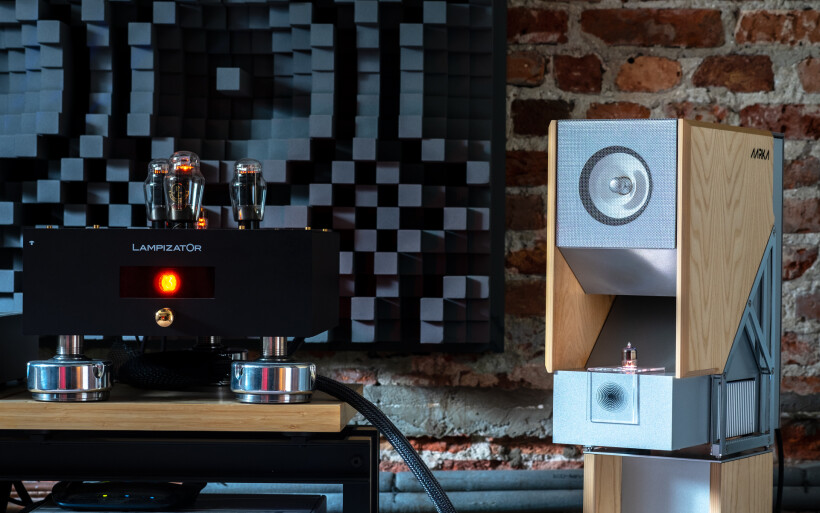 Rethm speakers are known for their active bits as much as rounded frames unlike anything else on the market, but that peculiar look is no more and I had to know why. Upon asking nicely Jacob told me that more conventional rectangular cabinets are much easier to manufacture than his old curved shells that proved too controversial and polarizing to too many eyes. The man’s new styling had to stay unusual though and the same story is with wideband drivers not outsourced but made from scratch at his facility. Each Rethm model gets its very own unit so there’s four of them in total. Aarka’s 5-inchers feature paper cones and whizzers, 94dB sensitivity and ferric magnets with small neodymium units on top of their pole pieces. Each’s rear strokes travel through a nearly 1m-long internal labyrinth that folds several times to open out into a large horn mouth on a speaker’s front. To achieve higher midbass density and lower midrange presence that escape route got shorter in comparison to the first Aarka’s tunnel. Since Rethm’s founder isn’t exactly a fan of venting, today’s subject is a sealed design that incorporates twin 6.5” rear-firing woofers per channel.
Rethm speakers are known for their active bits as much as rounded frames unlike anything else on the market, but that peculiar look is no more and I had to know why. Upon asking nicely Jacob told me that more conventional rectangular cabinets are much easier to manufacture than his old curved shells that proved too controversial and polarizing to too many eyes. The man’s new styling had to stay unusual though and the same story is with wideband drivers not outsourced but made from scratch at his facility. Each Rethm model gets its very own unit so there’s four of them in total. Aarka’s 5-inchers feature paper cones and whizzers, 94dB sensitivity and ferric magnets with small neodymium units on top of their pole pieces. Each’s rear strokes travel through a nearly 1m-long internal labyrinth that folds several times to open out into a large horn mouth on a speaker’s front. To achieve higher midbass density and lower midrange presence that escape route got shorter in comparison to the first Aarka’s tunnel. Since Rethm’s founder isn’t exactly a fan of venting, today’s subject is a sealed design that incorporates twin 6.5” rear-firing woofers per channel.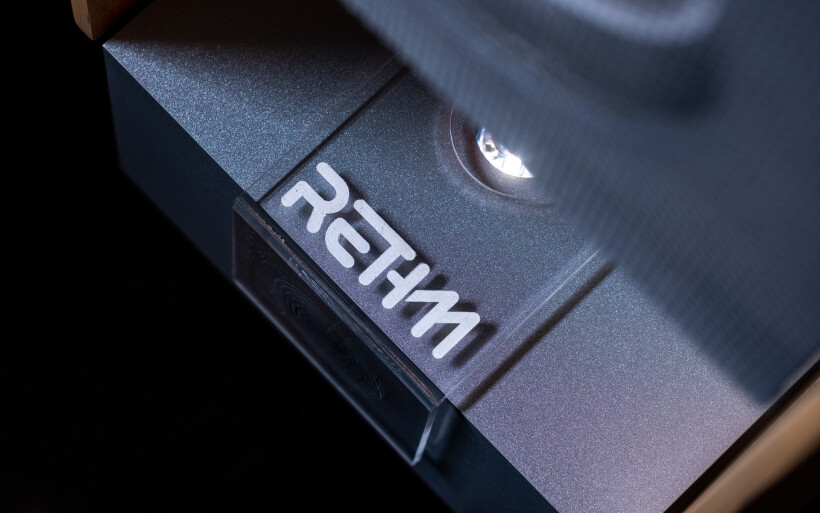 Although we’ve already seen wideband speakers with subs both external and internal, Aarka is a fully active design that doesn’t require any standalone amplification at all. Being in 100% self-sufficient on this count means that anything above just a DAC with volume control and some RCAs isn’t necessary. Aarka measures (W x D x H) 21 x 45 x 47cm and weighs 15kg. Electronics inside include a 70wpc class AB solid-state amp for twin bass transducers, while each 5-incher got a 25wpc tube-transistor hybrid circuit based on output FETs and one 6H6P double-diode driver for them. This tube located just in front of a horn’s mouth is externally accessible so easy to swap, nice to look at and illuminated from below upon engaging Aarka’s hybrid amp. Once it’s bypassed, that white light goes dark.
Although we’ve already seen wideband speakers with subs both external and internal, Aarka is a fully active design that doesn’t require any standalone amplification at all. Being in 100% self-sufficient on this count means that anything above just a DAC with volume control and some RCAs isn’t necessary. Aarka measures (W x D x H) 21 x 45 x 47cm and weighs 15kg. Electronics inside include a 70wpc class AB solid-state amp for twin bass transducers, while each 5-incher got a 25wpc tube-transistor hybrid circuit based on output FETs and one 6H6P double-diode driver for them. This tube located just in front of a horn’s mouth is externally accessible so easy to swap, nice to look at and illuminated from below upon engaging Aarka’s hybrid amp. Once it’s bypassed, that white light goes dark. On fit ‘n’ finish today’s Rethm is made well given its price, but upon a closer inspection it was apparent that it was built by hand in a small boutique shop. Here I mean tolerances a bit off in several places and some foam around rear cones upon removing their grilles, but nothing specific I’d consider a deal breaker. My loaner was provided with stands I had to put together first, but the assembly procedure was utmost easy. Two wooden rectangles with one shorter in the middle formed the letter H that connected to a single steel flat square on top, while the bottom side got two of them plus four pointy cylinders that went right in-between to form a decoupling base. The entire structure was firm with a speaker positioned on the upper level, but those tiny barrels held in place via silicone said nay sliding it on the floor. Any changes demanded removing monitors from their stands, carefully lifting these legs first and putting key ingredients afterwards, which wasn’t convenient and I’d address that.
On fit ‘n’ finish today’s Rethm is made well given its price, but upon a closer inspection it was apparent that it was built by hand in a small boutique shop. Here I mean tolerances a bit off in several places and some foam around rear cones upon removing their grilles, but nothing specific I’d consider a deal breaker. My loaner was provided with stands I had to put together first, but the assembly procedure was utmost easy. Two wooden rectangles with one shorter in the middle formed the letter H that connected to a single steel flat square on top, while the bottom side got two of them plus four pointy cylinders that went right in-between to form a decoupling base. The entire structure was firm with a speaker positioned on the upper level, but those tiny barrels held in place via silicone said nay sliding it on the floor. Any changes demanded removing monitors from their stands, carefully lifting these legs first and putting key ingredients afterwards, which wasn’t convenient and I’d address that.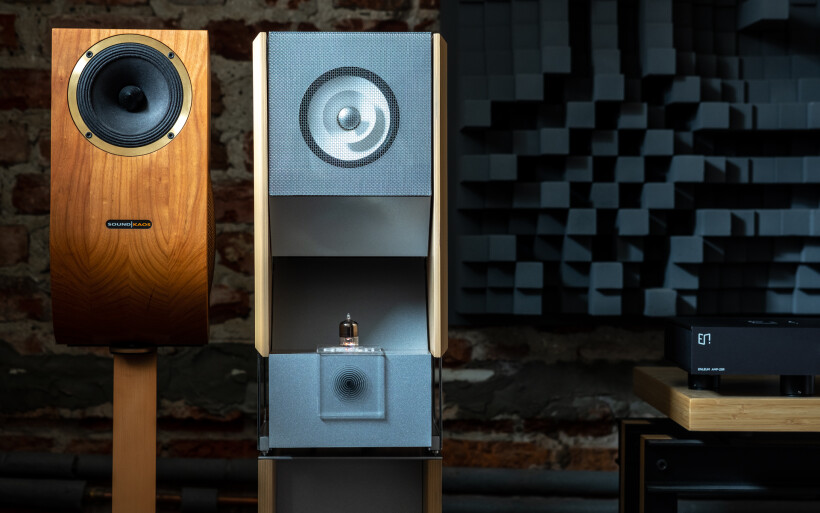 Prior to any listening tests I had to set up Aarka in my room and then adjust two critical dials on its rear panel. The choice of companions for this speaker set was enjoyably straightforward. My LampizatOr Pacific and Trilogy 915R respectively handled digital conversion and volume control. Considering their stickers these were clear overkills, but also hardware I’ve been using daily in my work so it had to stay. Still, a far simpler less costly DAC with variable outputs a’la iFi audio Pro iDSD would’ve sufficed. On utilities, form factor and overall usefulness it’d actually fit Aarka’s modest price tag and needs even better. That’s the lovely thing about this Indian affair, to get going it truly doesn’t need anything above that plus two power cords and as many RCAs. Speaking of, its inputs saw LessLoss C-MARC power cables and DIY ICs as all my usual interconnects were too short.
Prior to any listening tests I had to set up Aarka in my room and then adjust two critical dials on its rear panel. The choice of companions for this speaker set was enjoyably straightforward. My LampizatOr Pacific and Trilogy 915R respectively handled digital conversion and volume control. Considering their stickers these were clear overkills, but also hardware I’ve been using daily in my work so it had to stay. Still, a far simpler less costly DAC with variable outputs a’la iFi audio Pro iDSD would’ve sufficed. On utilities, form factor and overall usefulness it’d actually fit Aarka’s modest price tag and needs even better. That’s the lovely thing about this Indian affair, to get going it truly doesn’t need anything above that plus two power cords and as many RCAs. Speaking of, its inputs saw LessLoss C-MARC power cables and DIY ICs as all my usual interconnects were too short.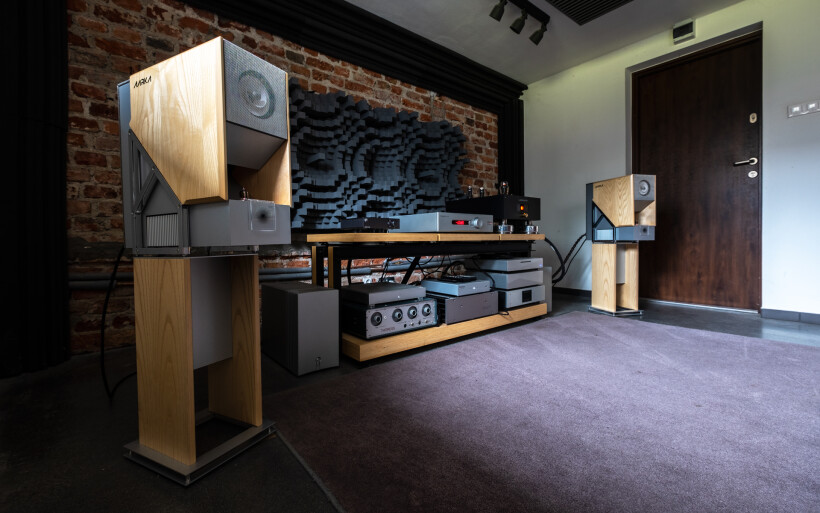 Aarka’s rear dials dramatically change its bass output; from subtle supportive pulses to omnipresent excessive low end far beyond anyone’s comfort zone. Luckily multiple steps in-between allow for very precise gradual adjustments to one’s individual taste and listening space. The low-pass knob set at 90Hz and leveled at four out of eleven dots available were my ideal settings that secured downstairs heft and might along the lines of typical floorstanders, not monitors. We’ll get back to this subject in a bit. More importantly, Aarka’s dials set up my way remained noticeably below half their scales and I didn’t even dare thinking how pushing them all the way up could possibly sound like. If anything, the outcome at my place surely wouldn’t outmatch solid results already achieved there. It’s worth mentioning that Rethm Maarga’s isobaric subs driven by their internal 400wpc class D amps were cut at 120Hz and half their level, so noticeably higher than this report’s subject yet still leaner if my memory serves me well. Their gain factors thus had to differ a fair bit.
Aarka’s rear dials dramatically change its bass output; from subtle supportive pulses to omnipresent excessive low end far beyond anyone’s comfort zone. Luckily multiple steps in-between allow for very precise gradual adjustments to one’s individual taste and listening space. The low-pass knob set at 90Hz and leveled at four out of eleven dots available were my ideal settings that secured downstairs heft and might along the lines of typical floorstanders, not monitors. We’ll get back to this subject in a bit. More importantly, Aarka’s dials set up my way remained noticeably below half their scales and I didn’t even dare thinking how pushing them all the way up could possibly sound like. If anything, the outcome at my place surely wouldn’t outmatch solid results already achieved there. It’s worth mentioning that Rethm Maarga’s isobaric subs driven by their internal 400wpc class D amps were cut at 120Hz and half their level, so noticeably higher than this report’s subject yet still leaner if my memory serves me well. Their gain factors thus had to differ a fair bit. Full-range drivers aren’t all the same and consequently have different positioning needs. sound|kaos Vox 3afw monitors distanced some two arm’s lengths away from the listening chair and crossed there are fabulous. Cube Audio Nenuphar floorstanders enjoy just a slight toe in but more aggressive tilts mess up their imaging capabilities. The former’s cones are free from whizzers, the latter’s membranes feature multiple. Unsurprisingly Aarka’s 5-inchers loaded with their own paper collars produced the most pleasing coherent sonics upon facing them pretty much straight just as full-sized Cubes and Rethms before. The more today’s monitors looked towards the inside, the more tunnel-like, narrow and odd their spatial projections were. Jacob asked about his positioning choices explained that he never toes in his speakers, which conveniently confirmed that my observations were on point.
Full-range drivers aren’t all the same and consequently have different positioning needs. sound|kaos Vox 3afw monitors distanced some two arm’s lengths away from the listening chair and crossed there are fabulous. Cube Audio Nenuphar floorstanders enjoy just a slight toe in but more aggressive tilts mess up their imaging capabilities. The former’s cones are free from whizzers, the latter’s membranes feature multiple. Unsurprisingly Aarka’s 5-inchers loaded with their own paper collars produced the most pleasing coherent sonics upon facing them pretty much straight just as full-sized Cubes and Rethms before. The more today’s monitors looked towards the inside, the more tunnel-like, narrow and odd their spatial projections were. Jacob asked about his positioning choices explained that he never toes in his speakers, which conveniently confirmed that my observations were on point. Aarka’s sealed topology and rear drivers said hello to experiments with coupling this cone artillery to my crib’s front wall. Here the recipe was simple; the shorter the distance in-between was, the stronger, more contoured and powerful bass I got in return, but at a cost of lesser imaging depth. In one of his mails Jacob informed me that in his 40m2 listening room Aarka 2.5m away from that critical surface already makes gargantuan bottom end, while in my far smaller cave it did the same about one meter away from nearby walls. On sheer bass amount I honestly couldn’t ask for more and the same story was with spot on ratio of its elasticity, bloom, textural qualities, boldness and control. This was hardly any surprise, speakers free from venting integrate easier with listening spaces by limiting their gain and keeping unwanted wobble at bay, while cleaner more visceral bass is the outcome. Aarka clearly was so geared with its muscular snappy bottom end that threw proper elastic tactile blows, but it also had that region generously infused with pleasantly fatty filler, which gave me something to think about.
Aarka’s sealed topology and rear drivers said hello to experiments with coupling this cone artillery to my crib’s front wall. Here the recipe was simple; the shorter the distance in-between was, the stronger, more contoured and powerful bass I got in return, but at a cost of lesser imaging depth. In one of his mails Jacob informed me that in his 40m2 listening room Aarka 2.5m away from that critical surface already makes gargantuan bottom end, while in my far smaller cave it did the same about one meter away from nearby walls. On sheer bass amount I honestly couldn’t ask for more and the same story was with spot on ratio of its elasticity, bloom, textural qualities, boldness and control. This was hardly any surprise, speakers free from venting integrate easier with listening spaces by limiting their gain and keeping unwanted wobble at bay, while cleaner more visceral bass is the outcome. Aarka clearly was so geared with its muscular snappy bottom end that threw proper elastic tactile blows, but it also had that region generously infused with pleasantly fatty filler, which gave me something to think about.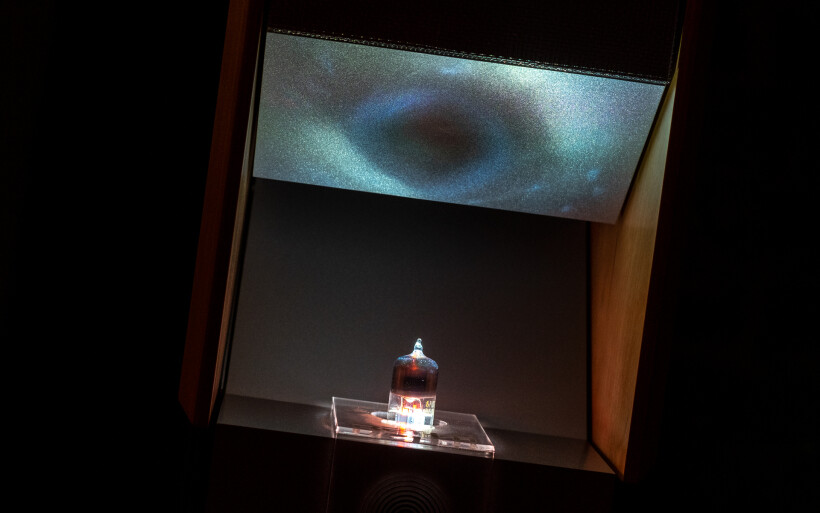 Bass from a sealed box always has me ready for a particular sort of ferocity, energy, control and brutality typical for such designs. Aarka was sporty enough to easily match that profile, but also as equally bloomy and full to behave like a vented type on a steroid cycle that kept this kind’s usual wooly boom-inducing drawbacks at the door. It soon turned out that Aarka’s blossomed yet sporty bass was the foundation for lively full-bodied performance fit for repertoire beyond scopes of most full-range enthusiasts. Its ability to tackle such jobs is in fact this story’s key plot twist.
Bass from a sealed box always has me ready for a particular sort of ferocity, energy, control and brutality typical for such designs. Aarka was sporty enough to easily match that profile, but also as equally bloomy and full to behave like a vented type on a steroid cycle that kept this kind’s usual wooly boom-inducing drawbacks at the door. It soon turned out that Aarka’s blossomed yet sporty bass was the foundation for lively full-bodied performance fit for repertoire beyond scopes of most full-range enthusiasts. Its ability to tackle such jobs is in fact this story’s key plot twist.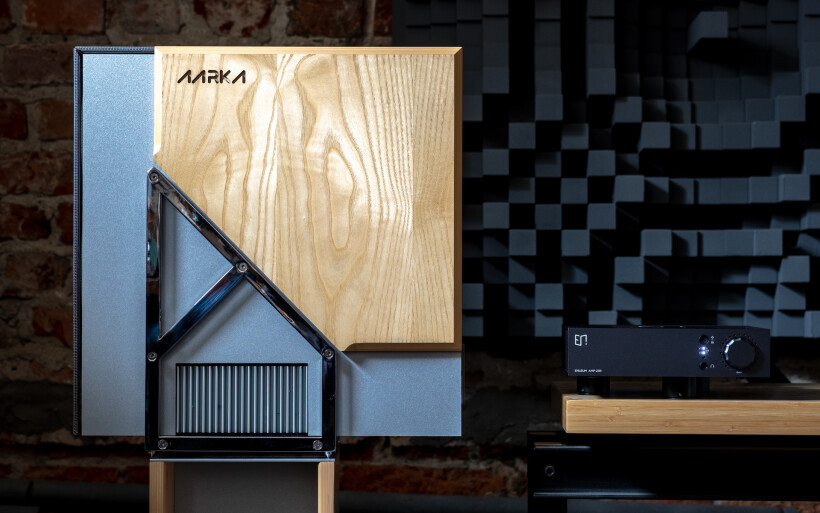 Although Aarka is a monitor type, on tactile elastic feel, bass quantity and sensible mass it struck me as capable enough to easily leave many floorstanding speakers embarrassed just as i.e. Dutch&Dtuch 8c and Buchardt Audio A500 before it. That said, by going active and sealed today’s Rethm secured its first win. Full-range transducers are still widely considered as prickly, whitish, ethereal and piercing, but after reviewing quite a few specimens with them embedded that’s not my experience at all. Suffice it to say, Aarka didn’t break that lucky streak either. Its 5-inchers free from listed issues performed just the way their rare kind should. Here I mean elevated quickness, outline specificity, insight, directness, articulation and clarity plus that particularly fetching expressiveness, seductiveness and convincing intimacy only such transducers can pull. I find them artful on these delicate sensual fronts and Aarka had emerged as quite the artistic type as well.
Although Aarka is a monitor type, on tactile elastic feel, bass quantity and sensible mass it struck me as capable enough to easily leave many floorstanding speakers embarrassed just as i.e. Dutch&Dtuch 8c and Buchardt Audio A500 before it. That said, by going active and sealed today’s Rethm secured its first win. Full-range transducers are still widely considered as prickly, whitish, ethereal and piercing, but after reviewing quite a few specimens with them embedded that’s not my experience at all. Suffice it to say, Aarka didn’t break that lucky streak either. Its 5-inchers free from listed issues performed just the way their rare kind should. Here I mean elevated quickness, outline specificity, insight, directness, articulation and clarity plus that particularly fetching expressiveness, seductiveness and convincing intimacy only such transducers can pull. I find them artful on these delicate sensual fronts and Aarka had emerged as quite the artistic type as well.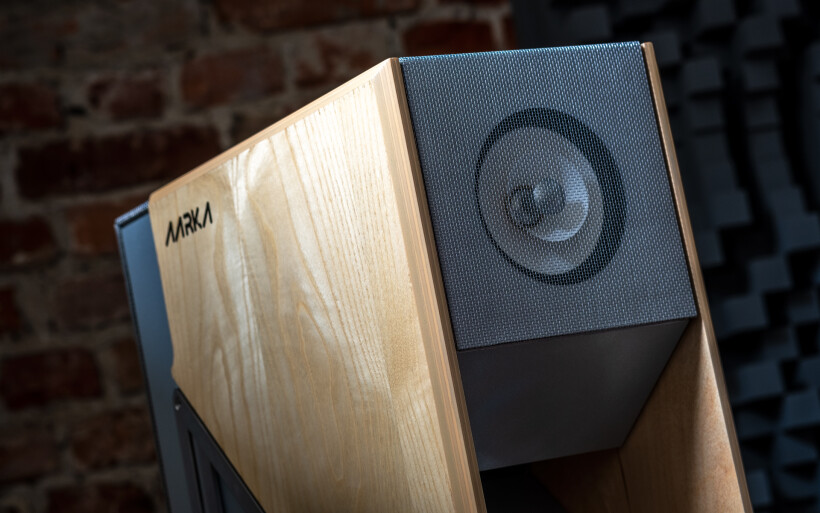 Full-range sonic packages are inherently as hi-res as they’re euphonic and tangible, but usually also on the lean side. Aarka’s take on that balance was to an extent opposite. Its front drivers fed by internal amps had that extra heft and saturation to nicely match woofers’ might. This approach resulted in performance less focused on details and pronunciation versus i.e. Maarga, but undoubtedly ballsier and surprising given today’s footprint. The takeaway here was thus clear. By trading in some speed and resolution Aarka’s maker managed to deliver enjoyably casual beefy tuning not picky about repertoire and clearly targeted at a broad audience. If now I had to describe this product in one sentence, I’d say it’s an augmented widebander type for masses that’s a breeze to set up and use. Several days into auditions it struck me as ideal for newcomers to the full-range breed and intrigued by it, but still skeptical. That said, it’s the most approachable widebander design I know and its price makes it even more realistic.
Full-range sonic packages are inherently as hi-res as they’re euphonic and tangible, but usually also on the lean side. Aarka’s take on that balance was to an extent opposite. Its front drivers fed by internal amps had that extra heft and saturation to nicely match woofers’ might. This approach resulted in performance less focused on details and pronunciation versus i.e. Maarga, but undoubtedly ballsier and surprising given today’s footprint. The takeaway here was thus clear. By trading in some speed and resolution Aarka’s maker managed to deliver enjoyably casual beefy tuning not picky about repertoire and clearly targeted at a broad audience. If now I had to describe this product in one sentence, I’d say it’s an augmented widebander type for masses that’s a breeze to set up and use. Several days into auditions it struck me as ideal for newcomers to the full-range breed and intrigued by it, but still skeptical. That said, it’s the most approachable widebander design I know and its price makes it even more realistic.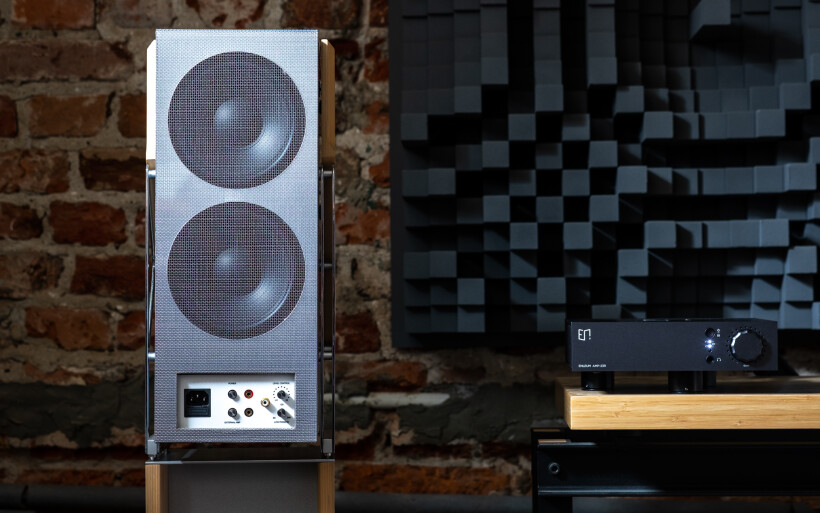 Once I had a firm idea what Aarka did and how, it was time to stack it against a far smaller, passive and twice as dear sound|kaos Vox 3afw monitor set. Both contestants were similar on seductive features inherent only to their kind and exceptionally useful for minimalist acoustic bits, but pretty much everything else set them apart. In a nutshell, Aarka felt heftier, more grounded, voluptuous, relaxed, darker and calmer, while the Swiss was more radiant, quicker, contoured and investigative. Still, all that was a given long before their first skirmish. Where the former’s tuning emphasized extra boldness, forgiving nature and lesser grip and traction, its opponent was leaner but more energized and equipped with noticeably stronger magnifying optics. Although these differences had a drastic impact on how both product sounded and felt like, the biggest disparity was in their spatial abilities and presentation.
Once I had a firm idea what Aarka did and how, it was time to stack it against a far smaller, passive and twice as dear sound|kaos Vox 3afw monitor set. Both contestants were similar on seductive features inherent only to their kind and exceptionally useful for minimalist acoustic bits, but pretty much everything else set them apart. In a nutshell, Aarka felt heftier, more grounded, voluptuous, relaxed, darker and calmer, while the Swiss was more radiant, quicker, contoured and investigative. Still, all that was a given long before their first skirmish. Where the former’s tuning emphasized extra boldness, forgiving nature and lesser grip and traction, its opponent was leaner but more energized and equipped with noticeably stronger magnifying optics. Although these differences had a drastic impact on how both product sounded and felt like, the biggest disparity was in their spatial abilities and presentation. Martin Gateley’s über standmount set positioned up close and personal as described above granted me access to immensely intense aural canvas that had me surrounded by virtual sound sources and on stage among them. On that score Jacob George’s creation projected a more distant perspective that resembled an enormously sized wall right in front that struck me as wider, taller and more massive. Although uniformly built from left to right and impressive, it was also less surrounding, shallower and with all outlines located there less specific versus the Vox that also had the upper had on oxygenation. Today’s Rethm was nimble, elastic and keen to effortlessly push lots of air my way and not feel any stuffy at all, however its opponent’s spatial bubble-like touchable illusory acts made it sensibly more opened up and quite unbeatable on that count. The former retaliated on bass that dug deeper, was bigger and slammed harder, but given both products’ respective arsenal, topology and frames that was no news either.
Martin Gateley’s über standmount set positioned up close and personal as described above granted me access to immensely intense aural canvas that had me surrounded by virtual sound sources and on stage among them. On that score Jacob George’s creation projected a more distant perspective that resembled an enormously sized wall right in front that struck me as wider, taller and more massive. Although uniformly built from left to right and impressive, it was also less surrounding, shallower and with all outlines located there less specific versus the Vox that also had the upper had on oxygenation. Today’s Rethm was nimble, elastic and keen to effortlessly push lots of air my way and not feel any stuffy at all, however its opponent’s spatial bubble-like touchable illusory acts made it sensibly more opened up and quite unbeatable on that count. The former retaliated on bass that dug deeper, was bigger and slammed harder, but given both products’ respective arsenal, topology and frames that was no news either.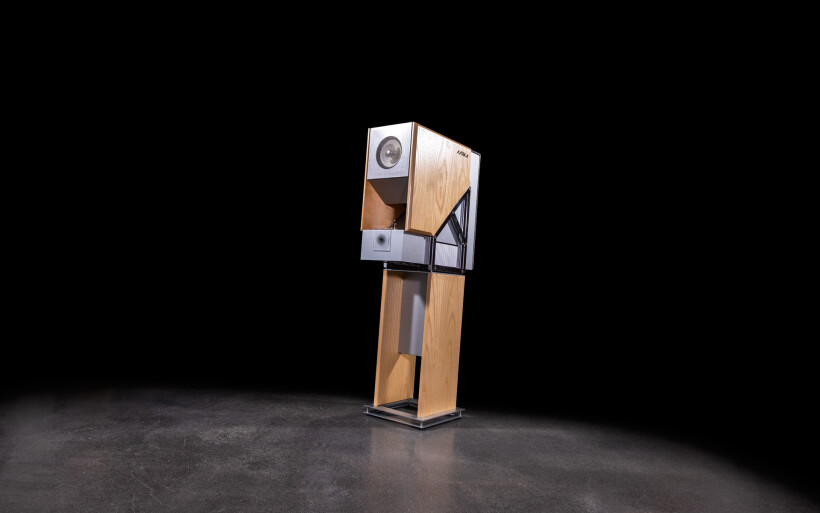 Aarka’s profile executed in a highly coherent smart way truly made it universally appealing and very happy about any tracks that featured electric guitars, quick synth bass beats, resonant boxes of unamplified string instruments played fast, growling vocal lines and even purposely applied distortion. Most of this good stuff is by many considered as unlistenable claptrap not fit for the full-range kind, but Aarka’s readiness for any such challenges to me was a rare virtue that made it this much more interesting, compliant and special.
Aarka’s profile executed in a highly coherent smart way truly made it universally appealing and very happy about any tracks that featured electric guitars, quick synth bass beats, resonant boxes of unamplified string instruments played fast, growling vocal lines and even purposely applied distortion. Most of this good stuff is by many considered as unlistenable claptrap not fit for the full-range kind, but Aarka’s readiness for any such challenges to me was a rare virtue that made it this much more interesting, compliant and special. At this point Aarka’s amps had to disengage and make room for Enleum AMP-23R that seemed ideal for its drivers and soon I’d learnt that it was indeed. As expected this petite integrated marvel quickly steered the meta from relaxation and roundness towards extra light and sun, greater quickness, wider color palette, longer decay, closer perspective, upped clarity and higher O2 content. This transformation wasn’t drastic by any means yet noticeable enough to extract extra performance from Aarka. Although it now sounded happier, spot on substantial and more refined, after several back and forths between its internal and external drive I still liked the former and that was telling. This hybrid circuit stacked against the best low-powered amp I know didn’t sound to me like an inferior afterthought, quite the contrary. After this comparison I gained respect for what Jacob did with Aarka as is. He’s aware that this distinctively dressed complete package can still sound better with a high-tiered external amp, but making it very listenable without such an assistance was the goal that to my ears was achieved. It’s time to wrap.
At this point Aarka’s amps had to disengage and make room for Enleum AMP-23R that seemed ideal for its drivers and soon I’d learnt that it was indeed. As expected this petite integrated marvel quickly steered the meta from relaxation and roundness towards extra light and sun, greater quickness, wider color palette, longer decay, closer perspective, upped clarity and higher O2 content. This transformation wasn’t drastic by any means yet noticeable enough to extract extra performance from Aarka. Although it now sounded happier, spot on substantial and more refined, after several back and forths between its internal and external drive I still liked the former and that was telling. This hybrid circuit stacked against the best low-powered amp I know didn’t sound to me like an inferior afterthought, quite the contrary. After this comparison I gained respect for what Jacob did with Aarka as is. He’s aware that this distinctively dressed complete package can still sound better with a high-tiered external amp, but making it very listenable without such an assistance was the goal that to my ears was achieved. It’s time to wrap.
Rethm Aarka’s visually complex unorthodox exterior is styled to either love or hate it without any weaker feelings in-between. Jacob George is an architect as much as an audio maker known for such unusually executed designs, so expecting the industry’s typical aesthetic especially from him would be silly. Since Aarka is an artisanal object made in small quantities by a boutique shop, its tolerances are loose here and there but acceptable. On price-to-performance ratio, in-room compliance, hardware needs and overall smarts however this sealed active monitor set scores very high, while its sound profiled to handle all music genres with equal ease adds to that already tall list of attractors. The way I see it, Rethm Aarka truly is ideal for individuals after the full-range flavor dressed in a reasonably priced turnkey box capable of slams way bolder than its compact frame could possibly imply. Put shortly, it’s a lot of a speaker for its coin and all in all a job well done!
Associated Equipment:
- Amplifier: Trilogy 995R, FirstWatt F7, Bakoon AMP-13R
- DAC: LampizatOr Pacific (KR Audio T-100 / Living Voice 300B + KR Audio 5U4G Ltd. Ed.)
- Speakers: Boenicke Audio W11 SE+, sound|kaos Vox 3afw
- Transport: Innuos Statement
- Preamplifier: Trilogy 915R, Thöress DFP
- Speaker cables: Boenicke Audio S3, LessLoss C-MARC
- Headphones: HifiMan Susvara
- Speaker signal conditioning: LessLoss Firewall for Loudspeakers
- Anti-vibration conditioning: 12x Carbide Audio Carbide Bases (under DAC, preamp and speakers)
- Interconnects: LessLoss Entropic Process C-MARC, Boenicke Audio IC3 CG, DIY ICs
- Power components: Gigawatt PC-3 SE EVO+/LC-3 EVO, LessLoss C-MARC, LessLoss Entropic Process C-MARC, Boenicke Audio Power Gate, ISOL-8 Prometheus
- USB components: iFi audio Mercury3.0
- Rack: Franc Audio Accesories Wood Block Rack
- Network: Fidelizer EtherStream, Linksys WRT160N
- Music: NativeDSD
Retail prices of reviewed components in EU (excl. tax):
- Rethm Aarka: €5’000/pr
Manufacturer: Rethm


